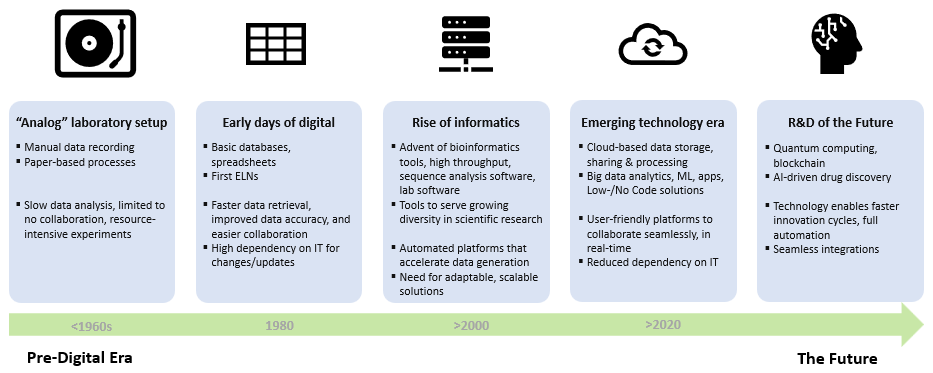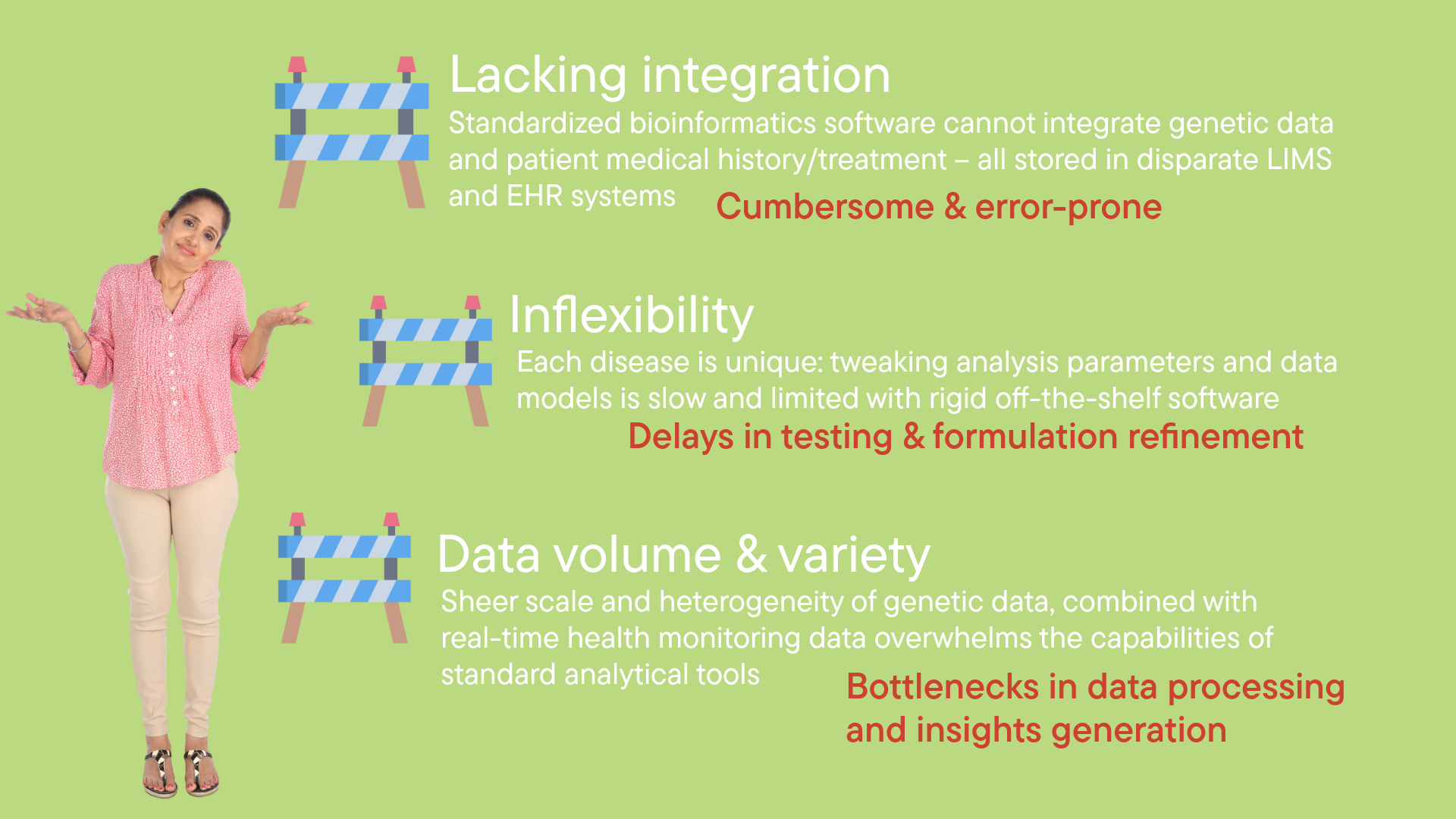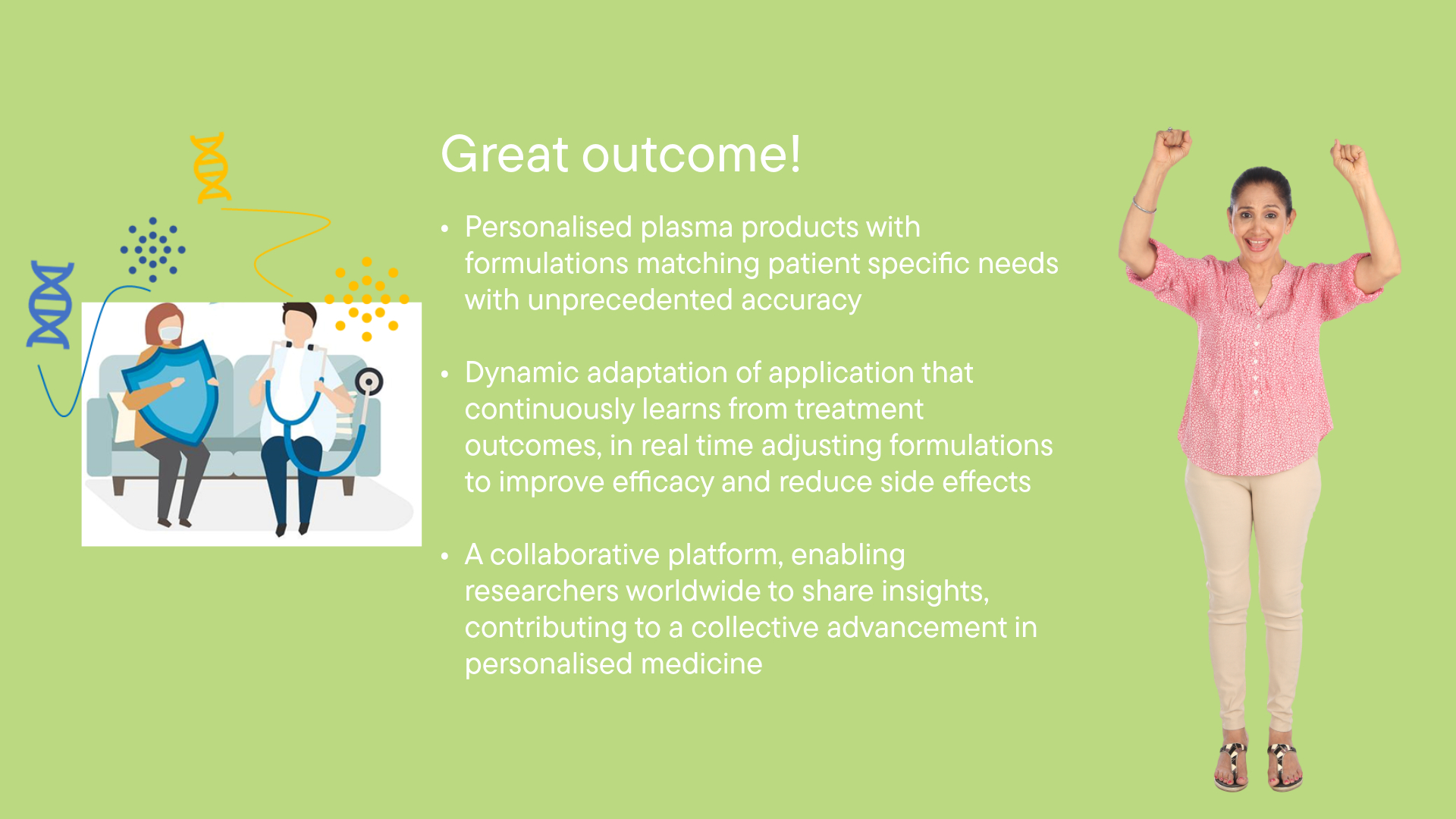Introduction:
In the ever-evolving landscape of research and development (R&D), the implementation of digital tools such as Laboratory Information Management Systems (LIMS) and electronic lab notebooks (ELN) has been a constant. These systems are pivotal in managing the complex data and processes of scientific research. However, despite significant advancements in the offerings from various vendors, a persistent challenge remains: rapidly adapting these tools to meet the diverse and specific needs of scientists.
The Unchanging Challenge:
The need for adaptable digital tools in R&D has never been more pronounced than in today’s rapidly advancing scientific landscape. As research methodologies evolve and data complexity increases, traditional approaches to digital tool implementation are proving inadequate. For years, R&D units have grappled with the limitations of LIMS and ELN systems. These platforms, while powerful, often come with a one-size-fits-all approach that scarcely accommodates the nuanced requirements of different scientific disciplines.
The rigidity of such systems can lead to inefficiencies, with scientists spending undue time adapting their workflows to fit the tool rather than the tool fitting the workflow. These inefficiencies are exacerbated in larger scientific organizations, where the diversity of the science typically widens the gap between tool capabilities and user needs.
For example, a molecular biology lab requires specialized workflow integrations for gene editing protocols, but the existing informatics system is designed for more general laboratory processes and lacks the specific functionality needed for CRISPR data management and analysis. This forces scientists to use additional, separate software solutions, complicating data integration, increasing the risk of errors and complicating user experience without adding value to the organization.
The Advent of No-Code and Low-Code Platforms:
With the advent of low-code/no-code solutions, the evolution of digital tools for R&D has entered a new era (see Figure 1). This trend could redefine how digital tools are utilized in scientific research. These platforms enable the creation of custom applications with minimal coding, opening up software development to a broader audience. Successful platforms such as Microsoft PowerApps, Airtable and Bubble or Outsystems have been utilized across various industries to streamline operations, enhance productivity, and foster innovation, showcasing their potential applicability in scientific research. Additionally, platforms like Sapio and L7are specialized low/no-code data and workflow platforms for the science domain.
Figure 1: Timeline of the Evolution of Digital Tools for R&D

Potential Challenges:
Leveraging these solutions does come with potential pitfalls that should be considered. While these no-code/low-code platforms are designed to be user-friendly, it’s important to remember that scientists are not software engineers. They often lack the expertise to foresee issues that typically arise in software development, such as:
- Adherence to data standards – to ensure data continuity and governance.
- Code performance – using computer memory effectively and avoiding memory leaks.
- Efficient integration into existing systems without overloading networks /systems.
- Code support and commenting – so that applications can be managed by others.
Additionally, the lack of regular maintenance can result in broken and outdated applications leading to user frustration. In conclusion, careful consideration must be given to implementation, training and ongoing management to avoid the common pitfalls. There is a balance between empowering scientists to create their own solutions and ensuring the ongoing cost, integrity and efficiency of the tools built on low-code/no-code platforms.
The Vision for a Scientist Citizen Developer:
Imagine a world where scientists are not just the end-users of digital tools but are the architects of their digital environment. This vision involves fostering a new breed of what could be called Scientist Citizen Developers —scientific professionals who are adept not only in their domain of research but also in leveraging no-code and low-code platforms like Zapier, Webflow, Back4App, Bubble, L7 or Sapio to build and customize their digital tools. Such empowerment would enable flexibility and efficiency previously unseen in large R&D units.
For example, in pharmaceutical manufacturing, a quality assurance team could use Bubble to create a bespoke dashboard to monitor the environmental conditions of clean rooms in real-time. This dashboard could integrate data from IoT sensors that track temperature, humidity, and particulate counts, directly linking to their LIMS for seamless record-keeping and compliance reporting. This type of custom tool would not only ensure adherence to strict regulatory standards but also empower the team to preemptively address conditions that could compromise product quality, enhancing operational efficiency and product safety.
Or consider a case study from Qiagen. They faced challenges because experimental information was recorded in great detail but on paper worksheets and the bioinformatics systems required manual triggering, which delayed reporting. With the help of the L7 platform, Qiagen built an integrated and automated solution for this end-to-end process to automate the entire laboratory workflow from sample to insight.
Why Now?
The convergence of several factors makes now the opportune time for companies to embrace this shift. First, the technological maturity of no-code and low-code platforms has reached a point where the creation of sophisticated, reliable applications is not just feasible but also streamlined. Second, the increasing digitization of R&D processes has created a fertile ground for innovation in how digital tools are developed and used. Finally, the persistent challenges of LIMS and ELN implementations—in terms of adaptability and user-friendliness—underscore the need for a new approach. Recent advancements in no-code platforms have made it easier than ever for scientists to design and deploy custom solutions tailored to their research needs.
Looking Forward
For companies willing to pioneer this transition, the benefits extend beyond solving the historical challenges of LIMS and ELN implementations. Empowering scientists to create their tools can lead to innovations in research methodologies, more collaborative and integrated workflows, and, ultimately, a faster path from discovery to development.
However, realizing this potential will require a cultural shift within organizations, one that values flexibility, fosters technical literacy, and supports the continuous learning of its scientific workforce. By fostering an environment where scientists are encouraged to explore and develop their digital tools, organizations can unlock new avenues for research advancement and innovation.
As we stand on the brink of this exciting evolution in R&D digital tooling, are companies ready to rethink their approach? By investing in developing Scientist Citizen Developers and embracing the capabilities of no-code and low-code platforms, we could align the power of digital tools with the specific, nuanced needs of scientific research. This is not an overnight journey; it takes enablement and upskilling of the scientists, and these tools need to deliver on their promises of easy maintenance, adherence to regulatory demands and data security. But, if done right, the future of R&D is not just digital; it can be customizable, flexible, and in the hands of the scientists themselves.
For questions or clarifications: info@zifornd.com









